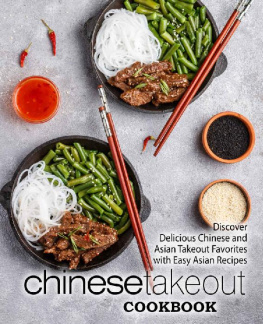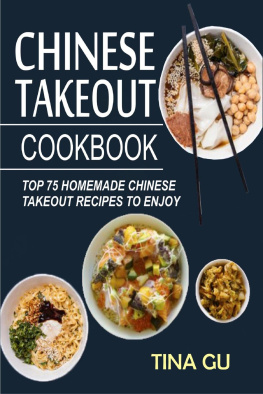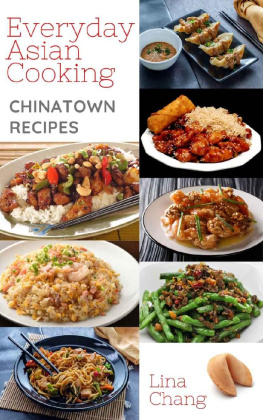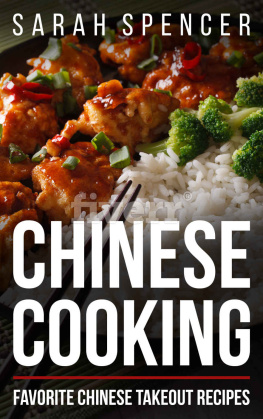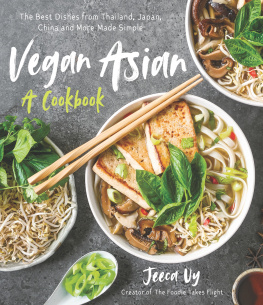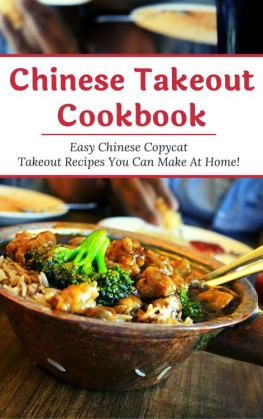THE

CHINESE
COOKBOOK
2ND EDITION
Manyee Elaine Mar

Avon, Massachusetts
For my family, and especially my father, who died a year ago, July 4, 2012. With thanks, too, to my brother, who cared for him the last years of his life.
Contents
Introduction
What makes Chinese cuisine so appealing? Mu Shu Pork and Kung Pao Chicken have become restaurant classics. Even the idea of Sweet and Sour Sauce has its own unique appeal.
What is it that makes the food so special? It is no longer a sense of surprise in vegetables and seasonings that we might consider exotic. Chinese takeout is now as familiar as delivery pizza, and a skilled cook can prepare a meal that epitomizes the best of Chinese cuisine using only locally obtained ingredients. Nor is specialized equipment necessary. A standard kitchen knife may take the place of a cleaver; a stir-fry can be done in a saut pan rather than a wok.
So why arent more people steaming pork buns and boiling dumplings? One misconception is that it takes a skilled chef working with state-of-the-art kitchenware to prepare good Chinese food. Fortunately, thats not true. Stir-frying, steaming, and deep-fryingthe three primary Chinese cooking techniquesare all easily mastered with practice, often using equipment already at hand.
Another common complaint is that the recipes are too complex. The sight of a lengthy ingredient list can be daunting. But it doesnt take long to learn how to break down that list into understandable componentsflavorings for a marinade, vegetables to stir-fry, seasonings, stock, garnishes, and so on. After that, the basic recipe is frequently quite simple.
As for time involved, most of the work lies in preparation. Time spent actually cooking can be mere minutes, especially if youre stir-frying. And once youve cooked a few dishes youll find yourself falling into a routinecutting vegetables while the meat is marinating, preparing a sauce while waiting for the oil to reach the required temperature for deep-frying. Other handy time-savers include washing vegetables in the morninggiving them all day to dryand marinating meat ahead of time and refrigerating it until youre ready to cook.
What are the pluses of cooking Chinese food at home? Besides the obvious economic advantage, homemade meals are often more healthful than restaurant fare, since you control the fat and calorie count. You can let your own creativity come into play, adjusting a recipe to add favorite foods or seasonal local ingredients. Cooking Chinese food at home also allows you to modify a recipe to suit your familys tastes; substituting parsley for cilantro, for example.
An added bonus is that there is something about cooking Chinese food that brings families together. Many pleasurable evenings can be spent filling dumplings or making pancakes. Appetizers such as egg rolls can often be baked as well as deep-fried, making it easier to involve young children.
This book is designed to help you incorporate home-cooked Chinese meals into your daily life. Tips on purchasing equipment, cooking techniques, and stocking the pantry are all here. Recipes include popular favorites such as Mu Shu Pork, and less well-known dishes such as Cheong Fun, a stuffed dim sum noodle. Information on cooking with more exotic ingredients such as Szechwan peppercorns and fermented black beans is provided, along with suggestions for substitutes where possible.
CHAPTER 1
Lets Get Started
It may seem like a daunting task to try and create your favorite dim sum dishes or restaurant menu items, with their array of choices and flavors, but its easy to prepare many Chinese recipes at home. All it takes is a good wok, mastery of a few simple cooking skills, and stocking the pantry with basic ingredients, many of which are available on local supermarket shelves.
At the Asian Market
To supplement your regular shopping, you may want to visit the local Asian grocery store. To the uninitiated, a visit to the Asian market can seem like a trip to a foreign land, minus a map or guidebook. But structure and organization do exist. Unlike the typical large supermarket, Asian groceries share much in common with the shops of days gone by, when several businesses shared the same general space. Most groceries have a butcher shop, where slabs of glazed barbecued pork hang from hooks. A fishmonger sells the freshest fish possible, preferably caught earlier that day. Most stores have a bakery that offers fresh-baked bread and buns. All of these businesses normally operate independently from the main grocery store.

In Chinese cooking, the fresher the better! It is quite possible that the fish you see on a slab of ice was killed mere hours before being delivered to the market. Freshness is particularly important in Cantonese cuisine. It is a point of pride with Cantonese cooks to create dishes that retain as much of the natural flavor and texture of the food as possible.
As for the main grocery area, the most important thing to remember is that the space allocation for various products is different from that in Western supermarkets. One aisle may be set aside for the myriad sauces and seasonings used in Chinese cooking, while another contains a varied assortment of noodles, flour, and starch. And where else would you find an entire aisle devoted to tea, Chinas national drink?
Two areas that may prove challenging are spices and fresh vegetables. It is very common for grocers to provide only the Cantonese names for produce. Similarly, bags of spices may have Chinese writing on the label, leaving you unsure of their English equivalent. However, it shouldnt be difficult to find a store employee or manager to help you figure it out.
An added plus to shopping at the Asian market is that you can stock up on ingredients and purchase the tools you need to begin cooking Chinese food at the same time. While most supermarkets carry only a few cooking tools, in Asian markets it is very common for several aisles to be stocked with everything from woks to harder-to-find accessories such as cooking chopsticks.

Is monosodium glutamate (MSG) necessary for Chinese dishes?
You dont need to add MSG to home-cooked dishes; fresh ingredients will provide plenty of flavor. However, since many restaurants use MSG, you may find it difficult to reproduce the taste of your favorite restaurant dish without it.
Staple Ingredients
Certain flavors such as ginger and garlic feature prominently in Chinese cooking. While on occasion you may find yourself scouring Chinatown for a seldom-used ingredient such as sharks fin, keeping the pantry stocked with a few basics will allow you to whip up a stir-fry any night of the week, using whatever combination of meat and vegetables you have on hand.






